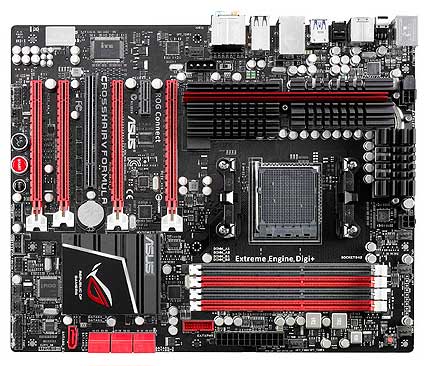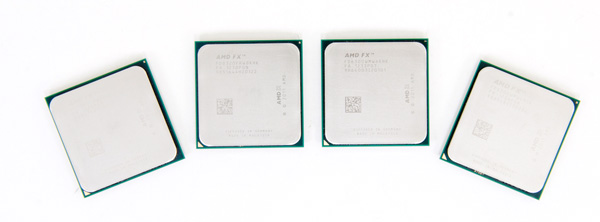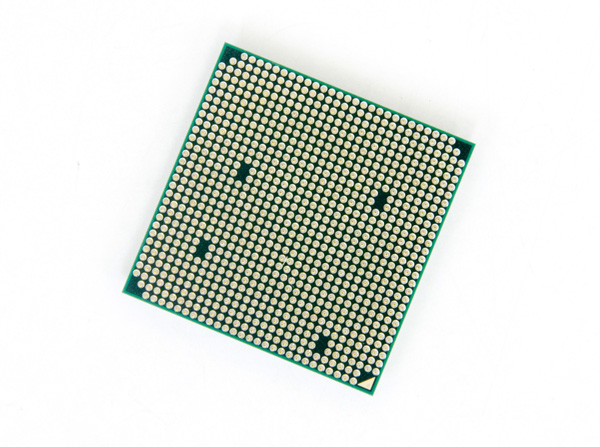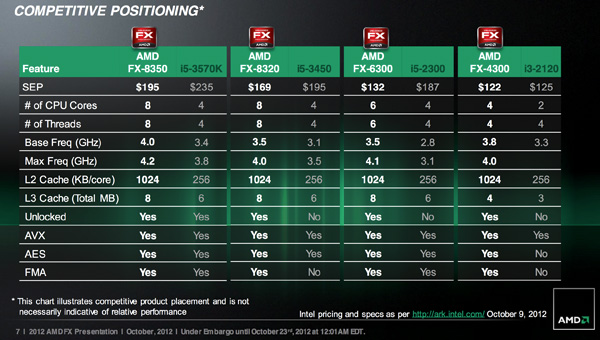The Vishera Review: AMD FX-8350, FX-8320, FX-6300 and FX-4300 Tested
by Anand Lal Shimpi on October 23, 2012 12:00 AM ESTLast year's launch of AMD's FX processors was honestly disappointing. The Bulldozer CPU cores that were bundled into each Zambezi chip were hardly power efficient and in many areas couldn't significantly outperform AMD's previous generation platform. Look beyond the direct AMD comparison and the situation looked even worse. In our conclusion to last year's FX-8150 review I wrote the following:
"Single threaded performance is my biggest concern, and compared to Sandy Bridge there's a good 40-50% advantage the i5 2500K enjoys over the FX-8150. My hope is that future derivatives of the FX processor (perhaps based on Piledriver) will boast much more aggressive Turbo Core frequencies, which would do wonders at eating into that advantage."
The performance advantage that Intel enjoyed at the time was beyond what could be erased by a single generation. To make matters worse, before AMD could rev Bulldozer, Intel already began shipping Ivy Bridge - a part that not only increased performance but decreased power consumption as well. It's been a rough road for AMD over these past few years, but you have to give credit where it's due: we haven't seen AMD executing this consistently in quite a while. As promised we've now had multiple generations of each platform ship from AMD. Brazos had a mild update, Llano paved the way for Trinity which is now shipping, and around a year after Zambezi's launch we have Vishera: the Piledriver based AMD FX successor.
At a high level, Vishera swaps out the Bulldozer cores from Zambezi and replaces them with Piledriver. This is the same CPU core that is used in Trinity, but it's optimized for a very different purpose here in Vishera. While Trinity had to worry about working nicely in a laptop, Vishera is strictly a high-end desktop/workstation part. There's no on-die graphics for starters. Clock speeds and TDPs are also up compared to Trinity.
| CPU Specification Comparison | ||||||||
| CPU | Manufacturing Process | Cores | Transistor Count | Die Size | ||||
| AMD Vishera 8C | 32nm | 8 | 1.2B | 315mm2 | ||||
| AMD Zambezi 8C | 32nm | 8 | 1.2B | 315mm2 | ||||
| Intel Ivy Bridge 4C | 22nm | 4 | 1.4B | 160mm2 | ||||
| Intel Sandy Bridge E (6C) | 32nm | 6 | 2.27B | 435mm2 | ||||
| Intel Sandy Bridge E (4C) | 32nm | 4 | 1.27B | 294mm2 | ||||
| Intel Sandy Bridge 4C | 32nm | 4 | 1.16B | 216mm2 | ||||
| Intel Lynnfield 4C | 45nm | 4 | 774M | 296mm2 | ||||
| Intel Sandy Bridge 2C (GT1) | 32nm | 2 | 504M | 131mm2 | ||||
| Intel Sandy Bridge 2C (GT2) | 32nm | 2 | 624M | 149mm2 | ||||
Vishera is still built on the same 32nm GlobalFoundries SOI process as Zambezi, which means there isn't much room for additional architectural complexity without ballooning die area, and not a whole lot of hope for significantly decreasing power consumption. As a fabless semiconductor manufacturer, AMD is now at GF's mercy when it comes to moving process technology forward. It simply has to make 32nm work for now. Piledriver is a light evolution over Bulldozer, so there's actually no substantial increase in die area compared to the previous generation. Cache sizes remain the same as well, which keeps everything roughly the same. These chips are obviously much larger than Intel's 22nm Ivy Bridge parts, but Intel has a full node advantage there which enables that.
Piledriver is a bit more power efficient than Bulldozer, which enables AMD to drive Vishera's frequency up while remaining in the same thermal envelope as Zambezi. The new lineup is in the table below:
| CPU Specification Comparison | ||||||||||
| Processor | Codename | Cores | Clock Speed | Max Turbo | L2/L3 Cache | TDP | Price | |||
| AMD FX-8350 | Vishera | 8 | 4.0GHz | 4.2GHz | 8MB/8MB | 125W | $199 | |||
| AMD FX-8150 | Zambezi | 8 | 3.6GHz | 4.2GHz | 8MB/8MB | 125W | $183 | |||
| AMD FX-8320 | Vishera | 8 | 3.5GHz | 4.0GHz | 8MB/8MB | 125W | $169 | |||
| AMD FX-8120 | Zambezi | 8 | 3.1GHz | 4.0GHz | 8MB/8MB | 125W | $153 | |||
| AMD FX-6300 | Vishera | 6 | 3.5GHz | 4.1GHz | 6MB/8MB | 95W | $132 | |||
| AMD FX-6100 | Zambezi | 6 | 3.3GHz | 3.9GHz | 6MB/8MB | 95W | $112 | |||
| AMD FX-4300 | Vishera | 4 | 3.8GHz | 4.0GHz | 4MB/4MB | 95W | $122 | |||
| AMD FX-4100 | Zambezi | 4 | 3.6GHz | 3.8GHz | 4MB/4MB | 95W | $101 | |||
The table above says it all. TDPs haven't changed, cache sizes haven't changed and neither have core counts. Across the board Vishera ships at higher base frequencies than the equivalent Zambezi part, but without increasing max turbo frequency (in the case of the 8-core parts). The 6 and 4 core versions get boosts to both sides, without increasing TDP. In our Trinity notebook review I called the new CPU core Bulldozed Tuned. The table above supports that characterization.
It's also important to note that AMD's pricing this time around is far more sensible. While the FX-8150 debuted at $245, the 8350 drops that price to $199 putting it around $40 less than the Core i5 3570K. The chart below shows where AMD expects all of these CPUs to do battle:
AMD's targets are similar to what they were last time: Intel's Core i5 and below. All of the FX processors remain unlocked and ship fully featured with hardware AES acceleration enabled. Most Socket-AM3+ motherboards on the market today should support the new parts with nothing more than a BIOS update. In fact, I used the same ASUS Crosshair V Formula motherboard I used last year (with a much newer BIOS) for today's review:

The Test
For more comparisons be sure to check out our performance database: Bench.
| Motherboard: | ASUS Maximus V Gene (Intel Z77) ASUS Crosshair V Formula (AMD 990FX) |
| Hard Disk: | Intel X25-M SSD (80GB) Crucial RealSSD C300 OCZ Agility 3 (240GB) Samsung SSD 830 (512GB) |
| Memory: | 4 x 4GB G.Skill Ripjaws X DDR3-1600 9-9-9-20 |
| Video Card: | ATI Radeon HD 5870 (Windows 7) NVIDIA GeForce GTX 680 (Windows 8) |
| Desktop Resolution: | 1920 x 1200 |
| OS: | Windows 7 x64/Windows 8 Pro x64 |













250 Comments
View All Comments
CeriseCogburn - Tuesday, October 30, 2012 - link
You simpletons all have the same hate filled idiot theory - so let me ask you - since amd has competition, WHY DO THEY SUCK SO BADLY ?Somehow you idiots claim, that if amd wasn't around, intel would suck. "Amd has made intel great"
Well, wait a minute - Intel is around, it's great, AND AMD SUCKS.
Take a moment, look in the mirror, think about it.... then let me know how red you turned... if not at all, contraception from here on out is a must.
How are you people so stupid ? How is it possible ?
Ukdude21 - Thursday, August 15, 2013 - link
You the biggest idiot on this website. I have read many comments on this website but yours are the most idiotic intel fanboy stained comments ever.halbhh2 - Thursday, October 25, 2012 - link
If power use is important to you, you should know that different reviews give different results for the power use vs competing intel chips.A couple of sites even have equal or lower idle power draw for the 8350 vs i7 3770.
Trying to figure out why, one variable is the motherboard. Is the Crosshair V a power hog?
I also looked at yearly cost in electrical use for my own useage.
The only thing I do that pegs multiple cores at 100% is chess analysis. In Deep Fritz the 8350 is close in performance to the i7 3770.
I do chess analysis about 1-5 hours a week on average, perhaps 200 hours per year.
The math is very simple. Power costs 16 cents per kilowatt hour. Peak power useage would cost an extra $3/year roughly vs an intel rig for me. Since I'd use a more power efficient motherboard than the Asus Crosshair, idle power is reasonable. I standby a lot when not using also.
An 8350 would cost me in the range of $4-$8 more per year in power bills vs an i7 3770 (it's competitor for chess analysis).
CeriseCogburn - Tuesday, October 30, 2012 - link
So go ahead and destroy the earth, see if any humans care.Ukdude21 - Thursday, August 15, 2013 - link
If you are the worried about the earth why don't you give your pc away. Least then we would not have to read your shit comments lol.taltamir - Thursday, October 25, 2012 - link
Starting the power cosumption graphs at 50 watt instead of 0 watt is GROSSLY MISLEADING! and very unfair to AMD.Lack of performance per watt comparison is unfair to Intel. Yea, AMD finally is able to, at stock, beat intel on some benchmarks... But they consume significantly more power to do so (intel could easily start selling higher clocked parts too)
pcfxer - Thursday, October 25, 2012 - link
If I ever build a new machine...it looks like I'll swing towards my first ever Intel box...hrmmm the anticipation may make me do it just for fun even though my Phenom II X555BE Unlocked and OC'd to 3.5GHz serves me just fine.OCedHrt - Friday, October 26, 2012 - link
it would be nice if they were normalized to idle power usage since we are comparing CPU power usage.halbhh2 - Friday, October 26, 2012 - link
I got curious about the idle power and visited 7 sites to look at reviews. No 2 sites had the same idle power difference between the 8350 vs the i7 3770. Values ranged from 9 watts AMD *lower* (lower! than intel) to 22 watts higher. The higher readings seemed to all be with the Asus Crosshair V, which logically must be a power hog.You should consider the idle power numbers *not* representative. Unreliable.
danrien - Monday, October 29, 2012 - link
Seems like its server opteron cousin would be kick-ass.